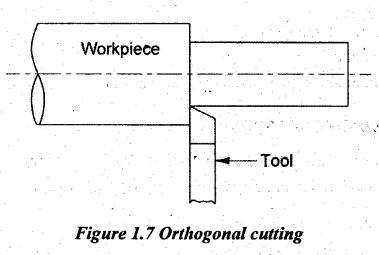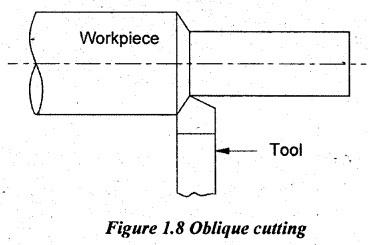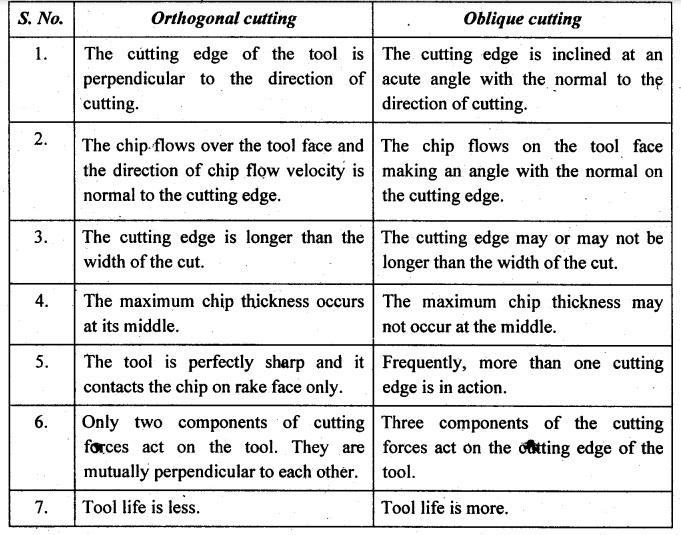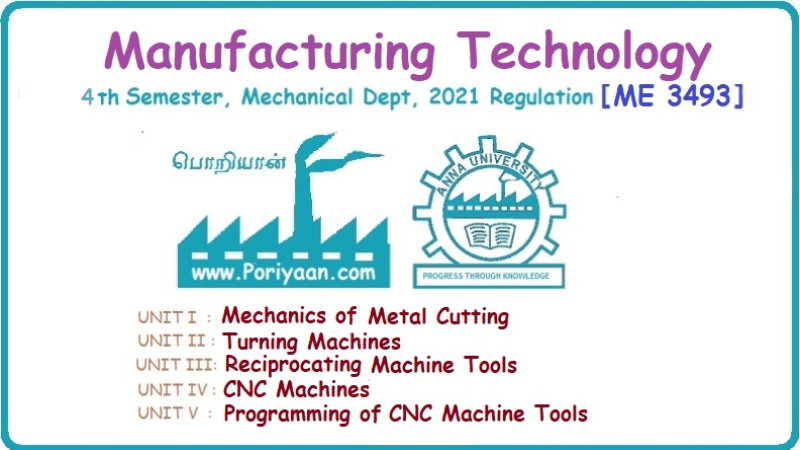Manufacturing Technology: Unit I: Mechanics of Metal Cutting
Types of metal cutting process
Mechanics of Metal Cutting - Manufacturing Technology
The metal cutting processes are mainly classified into two types. (i) Orthogonal cutting process (Two-dimensional cutting). (ii) Oblique cutting process (Three-dimensional cutting).
TYPES OF METAL CUTTING PROCESS The metal cutting processes are mainly classified into two types. (i) Orthogonal cutting process (Two-dimensional cutting). (ii) Oblique cutting process (Three-dimensional cutting). In orthogonal cutting, the cutting edge is straight, parallel to the original plane surface on the workpiece and perpendicular to the direction of cutting. For example: Lathe cut-off operation, straight milling, etc. Orthogonal cutting involves only two forces and it makes the analysis simpler. In oblique cutting, the cutting edge is inclined at an acute angle with the normal to the cutting direction. The analysis of the oblique cutting is more complex. In actual machining, cutting operations such as turning, milling etc. are oblique cutting. Orthogonal cutting 1. The cutting edge of the tool is perpendicular to the direction cutting. 2. The chip flows over the tool face and the direction of chip flow velocity is normal to the cutting edge. 3. The cutting edge is longer than the width of the cut. 4. The maximum chip thickness occurs at its middle. 5. The tool is perfectly sharp and it contacts the chip on rake face only. 6. Only two components of cutting forces act on the tool. They are mutually perpendicular to each other. 7. Tool life is less. Oblique cutting 1. The cutting edge is inclined at an acute angle with the normal to the direction of cutting. 2. The chip flows on the tool face making an angle with the normal on the cutting edge. 3. The cutting edge may or may not be longer than the width of the cut. 4. The maximum chip thickness may not occur at the middle. 5. Frequently, more than one cutting edge is in action. 6. Three components of the cutting forces act on the cutting edge of the tool. 7. Tool life is more.1. Orthogonal Cutting Process

2. Oblique Cutting Process

3. Comparison of Orthogonal and Oblique Cutting

Manufacturing Technology: Unit I: Mechanics of Metal Cutting : Tag: : Mechanics of Metal Cutting - Manufacturing Technology - Types of metal cutting process
Related Topics
Related Subjects
Manufacturing Technology
ME3493 4th semester Mechanical Dept | 2021 Regulation | 4th Semester Mechanical Dept 2021 Regulation
